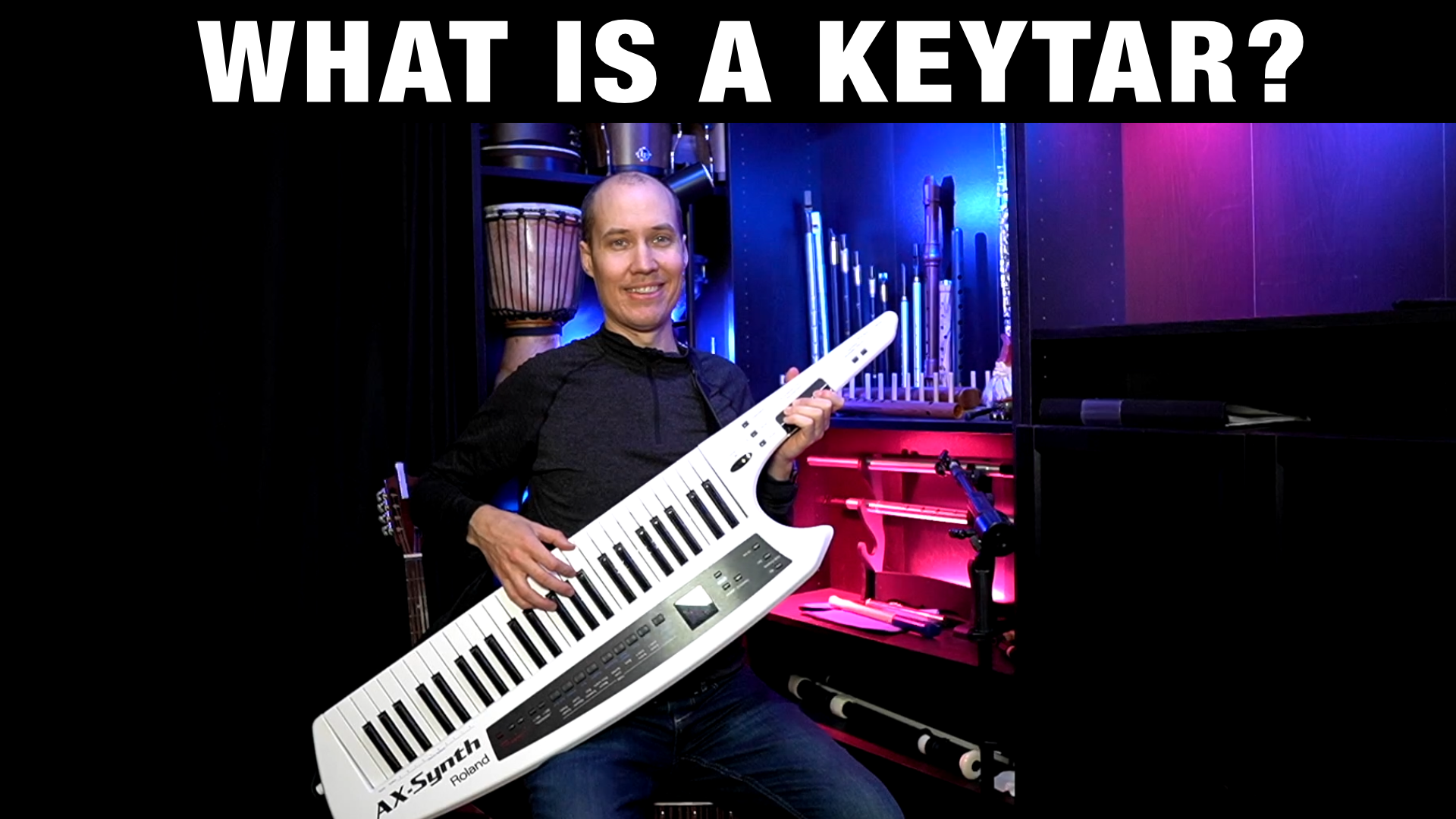 What is a Keytar?
What is a Keytar?
Basically it is a keyboard that you play while holding it like a guitar, hence the the name which is a combination of keyboard + guitar = keytar.
You even use a guitar strap around your neck, and the instrument than hangs at an angle so that you play the keys while standing.
Keytar vs Keyboard – Main Differences
- A keytar is played while holding it like a guitar with a strap around your neck
- A keytar have special controls for your left-hand for sound & performance techniques
- A keytar is a lead instrument: melody, bass, and riffs. Not chords and arpeggios.
Is the Keytar Easy to Learn?
If you already know how to play the standard piano keyboard, the transition to the keytar will be pretty easy.
It will take some time to get used to the unusual playing position, and to take advantage of the special performance controllers on the keytar. But in short, yes, the keytar is fairly easy to learn.
How many Keys does a Keytar have?
A keytar has to make a compromise in regards to size as you will hang it around your neck with a strap, and you also need to be able to reach all the keys.
3 to 4 octaves (36 to 49 keys) are the most common size for a keytar. The Roland AX-synth keytar that I own personally has 49 keys.
What Sounds can a Keytar play?
Modern keytars usually have a whole range of on board sounds, either sampled or a synth engine.
The most common sounds are lead synths and basses, and then of course distorted lead guitar sounds. However, I personally feel that a guitar is best for sounding like a guitar.
But bass lines, and synth leads and riffs can sound amazing on a keytar, and since you don’t have to stand in front of a keyboard stand it will be a much more liberating stage experience.
You can also connect your keytar with MIDI to an external sound source like a synthesizer or software instrument on your computer, to open up a whole new dimension of sounds.
